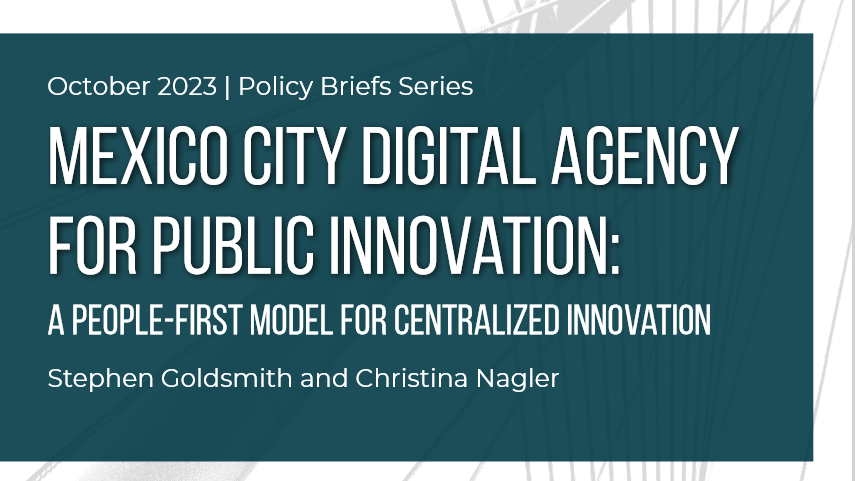- June 25, 2015
- Civic Engagement
This paper is part of a series published by Data-Smart City Solutions, a project of the Ash Center at Harvard Kennedy School. The series explores data-related facets of civic engagement in today’s cities.
Enacting policies to make more data publicly accessible also makes governments more accessible to the communities they serve. Open data fuels the kind of two-way communication that increases opportunities for the public to interact with government, while also allowing local governments to maximize the value of their data.
What is open data?
“Open data” is a term that can describe both content itself— data that is “open” to public view—and an overarching approach to publishing data in an open, transparent way. Open data is characterized by three core elements. To be open, data must first be available to everyone online, freely and without registration; second, it must be available without legal encumbrance on its use or reuse; and, third, it should be made available in forms and formats that make the data maximally useful for the broadest range of uses and users.
The term “open data” is conceptually rooted in the principles articulated in the 2005 Open Definition, a collaboratively developed statement of what it means for intellectual material to be “open.”[1] The Open Definition, now housed online at opendefinition.org, states that data is open when it is available to everyone, free for use and reuse, and when it has a minimal form of licensing which, at its most stringent, requires author attribution and the obligation to “share-alike,” or make subsequent derivative works similarly open. While open data need not necessarily come from a particular source, there is a particularly compelling public access claim on government as a source of open data, since government data was created and gathered under public authority. Because governments are most often the source of data that is opened, the term “open data” is often used interchangeably with the term “open government data.”
While open data is often assumed to be quantitative in nature, other perspectives are more expansive and consider data to be synonymous with information in general. This broader interpretation of “data” includes such text-heavy forms of information as legislation, which makes up the datasets used by the Sunlight Foundation’s Open States project (openstates.org). Textual data is “opened” when made legally accessible, made available to the public online, and structured in a way that makes it searchable and machine-readable, e.g., through the use of consistent metadata schema.
Download PDF to Read Full Paper
Top photo credit istock©MACIEJ NOSKOWSKI

 Emily Shaw is the Deputy Policy Director at the Sunlight Foundation, where she helps the organization lead the charge to make useful public information available online. Emily writes and speaks regularly on topics related to public data access. She has presented before a wide variety of local and national audiences and regularly provides insights to media outlets across the country. Before coming to the Sunlight Foundation, Emily served as a professor of political science at Thomas College in Waterville, Maine. She has worked for a range of civil and human rights organizations including Human Rights Watch, the ACLU, the American Friends Service Committee and the Organization for Security and Cooperation in Europe. Emily holds a Ph.D. in Political Science (UC Berkeley).
Emily Shaw is the Deputy Policy Director at the Sunlight Foundation, where she helps the organization lead the charge to make useful public information available online. Emily writes and speaks regularly on topics related to public data access. She has presented before a wide variety of local and national audiences and regularly provides insights to media outlets across the country. Before coming to the Sunlight Foundation, Emily served as a professor of political science at Thomas College in Waterville, Maine. She has worked for a range of civil and human rights organizations including Human Rights Watch, the ACLU, the American Friends Service Committee and the Organization for Security and Cooperation in Europe. Emily holds a Ph.D. in Political Science (UC Berkeley).


